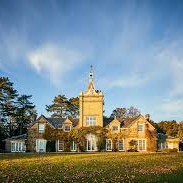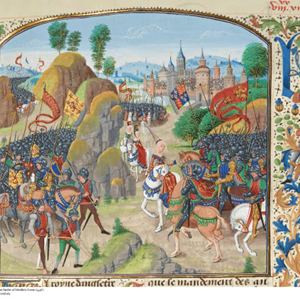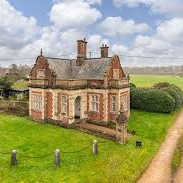Village History
Overview
The name Tytherley comes from Old English and means thin or tender wood. Tederleg (xi cent.); Tyderleg, Thundersleye, Tydresle (xiii cent.); Estderlegh, Tuderley, Estuderley (xiv cent.).
The village of East Tytherley is spread out along the rural road between Lockerley and West Tytherley, without any discernable village centre. It is one of the 59 parishes in Test Valley and covers an area of 2,678 acres, of which 984¾ acres are arable land, 879¾ acres permanent grass and 761 acres woods and plantations. The village is almost in the centre of the parish on the road from West Tytherley to Lockerley.
Lockerley Hall, the former residence of Captain Dalgety, lies south of the village. It is a red-brick house with stone dressings, built (1868–71) in Elizabethan style and nearly surrounded by a terraced garden.
In the park, surrounding the site of the old Tytherley House, there are some fine cedar, elm and other trees, most of which were planted by Denys Rolle (1748–97); there are also two grand avenues of yew trees. The cedars, of which more than thirty specimens survive, were brought to Tytherley by Denys Rolle about 1787 and his six daughters helped to plant them.
The church of St. Peter is about a mile away from Lockerley Hall.
Queenwood Farm is near the Roman road, which runs through the northern extremity of the parish, and is reached from the village by the shady walk known as Queenwood Avenue.
Hildon House
Hildon House in the north-eastern extremity of the parish, formerly known as Rose Hill, was purchased about 1857 by Sir Augustus Webster, who resided there until his death in 1886. His son, the eighth and present baronet (Sir Augustus Webster), pulled down the house and built the present structure of white brick and stone with Renaissance features. In 1902 he sold it, with the attached estate in Broughton and other adjacent parishes, to Mr. George Briscoe, the present owner. The soil is clay and the subsoil chalk.
Manors
The manor of EAST TYTHERLEY had at an early date four adjoining members—Lockerley, Holbury, East Dean and Broughton. These members were separated from it by royal grant to John de Vienna and Ellen his wife at the beginning of the 14th century, and the estate was reduced to its extent at the time of the Domesday Survey. It had then extended into Lockerley and the manor was consequently called the manor of EAST TYTHERLEY AND LOCKERLEY or TYTHERLEY AND LOCKERLEY. In the 15th century it was known also as QUEEN COURT, a name which it probably acquired during the time that it was held by Queen Philippa.
The manor was held in 1086 of the King by Alwi the son of Saulf, whose father had held it as an alod of Edward the Confessor. Local tradition has it that two tenants of the manor had fought for Harold and had both been killed at the battle of Hastings. Thomas de Columbars, who was in possession at the end of the 12th century, was living in 1229 Michael de Columbars, probably his son, inclosed the park of Tytherley with a ditch and hedge, and in 1245 his grandson Matthew paid 100 marks for leave to keep it inclosed and to make other inclosures. Matthew seems to have fought for the barons in the Civil War, but must afterwards have made his peace with the King, for in 1270 he received a grant for his good service that he and his heirs should be quit of the lawing of their dogs within the manor of Tytherley with its members of Lockerley and Holbury, which were within the metes of the forest of Buckholt.
Matthew de Columbars married Maud the daughter of Eudo de Moreville, and died childless about 1273. He was succeeded by his brother Michael, who granted the manor to Sir John de Cobeham for the yearly rent of a black sparrow-hawk. This grant seems to have been made for life only with reversion to the Crown, for in 1310 the King's tenant, John de Vienna, was in possession. Isabel de Hastings was lady of the manor of East Tytherley in 1333, and it is possible that she was then holding it by virtue of a grant made by Edward II in 1311 to her husband Ralph de Monthermer and his sons Thomas and Edward. On the death of Isabel in 1335 the custody of the manor was granted to William de Montagu, but in the same year the King gave the manor to Queen Philippa, who continued to hold it until her death in 1369. Edward III then granted it to Walter Chippenham for ten years, and extended the grant in 1372 to a life grant for a yearly rent of £45. This was cancelled in 1402, when Henry IV, 'with the assent of Walter and Alice his wife,' granted the manor to Sir Francis Court and his wife Joan, and the longer liver of them, at a rent of £20. In 1408 the King gave up his claim to the rent and also granted the reversion to Sir Francis and his heirs male. Sir Francis Court died in 1413, leaving the manor to his elder son Thomas, then nine years old, who died under age in 1424 and was succeeded by his brother Henry. Henry seems to have died childless, for the estate reverted to the Crown, and was granted by Edward IV in 1462 to Gerard de la Hey and Richard Hamond to hold for seven years. Six months later, however, he granted the same estate for life to his yeoman John Rede, who afterwards 'complained that he could not receive the issues, but that the said Gerard and Richard prevented him under colour of the first letters patent. He therefore prayed that the first letters patent should be revoked, and accordingly . . . the said letters patent to the said Gerard and Richard were annulled.' John Rede seems to have died shortly afterwards, for in 1464 Elizabeth the queen of Edward IV received a grant of the manor. Richard III on his accession granted a ten years' lease of the manor to John Tresswell, Thomas Hylles and Richard Hyll at a rent of £21 6s. 8d.
In 1496 'the manor of Tytherley and Lockerley, formerly Columbars,' was granted by Henry VII for a yearly rent of £33 13s. 4d. to George Bainbridge, who died in 1512, and was succeeded by Roger his son and heir. In July 1558 Thomas Bainbridge, the son and heir of Roger, was burnt for heresy, and the estate passed in accordance with a settlement made by him to his kinswoman Anne the wife of Richard Giffard. Her son Sir Henry Giffard died in 1592, leaving two sons, of whom the elder, William, succeeded his grandmother on her death in 1594; he died in 1597, and the estate passed to his brother Richard, who sold it in 1626 to Sir Henry Wallop. In 1653 Robert the son and heir of Sir Henry Wallop sold the manor to Joseph Garthwaite and Richard Wither, who conveyed it in the following year to Henry Rolle, Lord Chief Justice of the Upper Bench of Westminster. The Rolles continued in possession until 1801, when John Lord Rolle sold the manor to William Steele Wakeford of Andover, whose sons and co-heirs sold it about 1822 to Mr. Francis Bailey and Mr. Goldsmid, afterwards Sir Isaac Lyon Goldsmid, bart. As a Jew the latter was precluded from owning landed estates in England, and tradition says that, being anxious to become a landed proprietor and having an idea that the Emancipation Act would shortly be passed, he found the purchase money, the conveyance being made in the name of Bailey, who, however, refused to give up the property even after the Act had been passed. A compromise was effected in 1833, when the property was divided; Mr. Bailey took one moiety of the lands, and Sir Isaac the other moiety together with the house and the manorial rights. In 1849 Mr. Bailey's moiety was sold to Mr. afterwards Sir William Fothergill Cooke, one of the inventors of the electric telegraph; he built here a house, which he called 'Oaklands,' in 1850, and sold it together with his moiety of the estate in 1866 to Mr. Frederick Gonnerman Dalgety. In the following year Mr. Dalgety, finding that he could not easily adapt the house to his requirements, pulled it down and built upon its site the mansion now known as Lockerley Hall.
Sir Isaac Lyon Goldsmid's moiety of the estate passed from him to Sir Francis Goldsmid and then in succession to the latter's nephew, Sir Julian Goldsmid, who sold it in 1879 to Mr. F. G. Dalgety, whose eldest son, Captain Frederick John Dalgety, is the present owner of the whole estate.
East Tytherley Manor House, the home of the Giffards and Rolles, was a fine Elizabethan mansion, which stood close to the parish church. Shortly after the Rolle family bought the house it was very much altered, and some fine ceilings and friezes by Parisian artists were added. The Goldsmids did not occupy the house after the time of the Corn Laws agitation; it was tenanted for many years by General Yates, uncle of Sir Robert Peel, until his death in 1854, and was afterwards allowed to remain unoccupied except by caretakers. In 1903 a portion of the roof fell in, and the rest of the building having become much dilapidated Captain Dalgety was reluctantly compelled to have it pulled down. It was then found that a quantity of the materials had been used before, and upon excavating the foundations a cellar doorway of two stop-chamfered orders was discovered apparently of late 13th-century date, thus to some extent confirming the local tradition that there was a fine manor-house upon the same site in the reign of Henry III.
There were two mills in East Tytherley at the time of the Domesday Survey; these are said to have stood on the sites of Holbury Mill and Ford Mill, the former of which is now on the boundary between the parishes of East Dean and Lockerley, and partly in each parish, while the latter is solely in Lockerley.
Another appurtenance of the manor was a fishery of the water there from the bridge called 'Totesbrigge' to 'Shydesbrigge.'
A small manor in Tytherley was held at the time of the Domesday Survey by Papald' of Gilbert de Breteville, and had previously been held as an alod of King Edward by Chening. It is possible that this holding may be identified with HOLBURY (q.v.), now in the parish of Lockerley, which was certainly a member of East Tytherley in the reign of Henry III.



